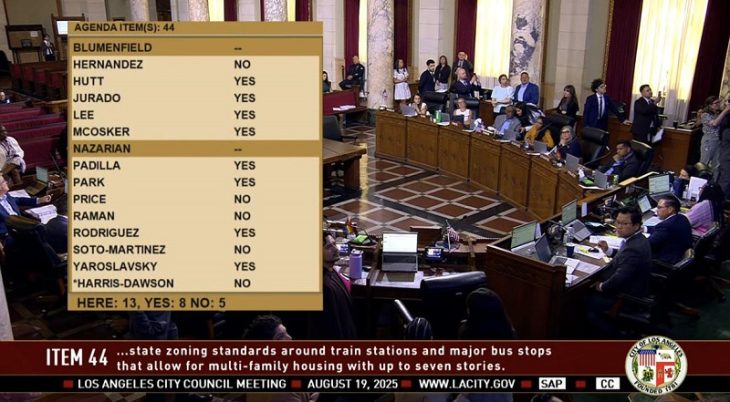The USC Gould School of Law held its annual Real Estate Law and Business Forum at the Jonathan Club in downtown LA on March 5 to reflect on matters affecting real estate this year.
The forum divided sessions into development, finance, and innovations tracks, with Century City companies HHF LP, Fortress Investment Group LLC, and Loeb & Loeb LLP in attendance.
Before the crowd broke into separate groups, a panel discussed Generation Y’er real estate trends.
Describing Generation Y’ers as those who “live at home, but go to destination weddings in Bali,” the panelists concluded that the following things drive Gy’er market behavior: student loans, privacy, quality over quantity, and an ‘eat, work, play’ environment.
At the session “The Money is Flowing,” speakers shared that the loan-to-deposit ratio is at an all-time low and that billions of dollars in lending capacity “should flush into the market soon.”
Such a stream of funds could mobilize construction projects that have been sluggish in recent years. “You can get funding” for “just about any type of project” now, the panelists said.
In “Real Estate Litigation in California: What You Need to Know,” the presenters discussed alternative methods of resolving real estate disputes.
“Courts are flooded so now is an excellent time to consider alternatives,” Robert Odson of Shumener, Odson & Oh LLP said.
In particular, judicial references have become increasingly popular. A judicial reference is “an optimal way to find yourself outside a jury, especially in complex commercial litigation matters,” the speakers said. However, an obvious drawback of a judicial reference is its expense, since clients should expect to pay $5-10 thousand dollars a day. Further, unlike an arbitration, the assigned referee is only required to follow a “general notions of fairness” standard.
If clients are concerned about privacy, they may also be less inclined to choose this alternative because of its access entitlement.
In “How Technology is Transforming Real Estate,” the panelists described how technological advancements are shaping the retail space. They predicted a greater presence of robots, similar to Amazon’s Kiva Systems. They also estimated that the .com arena would continue altering shopping habits.
As a result, stores like Walmart will likely convert retail stores into warehouses.
In the same session, Andrew Baker of Seyfarth Shaw also described the new programs used by law firms to increase contract accuracy.
Such computer program improves accuracy by detecting additions or variations from past-executed contracts on file, notifying the reader of any discrepancies.
“This doesn’t replace human review and the whole process,” Baker said. “But still – it’s a way to check and ensure you minimize risk in what you’re executing.”


























